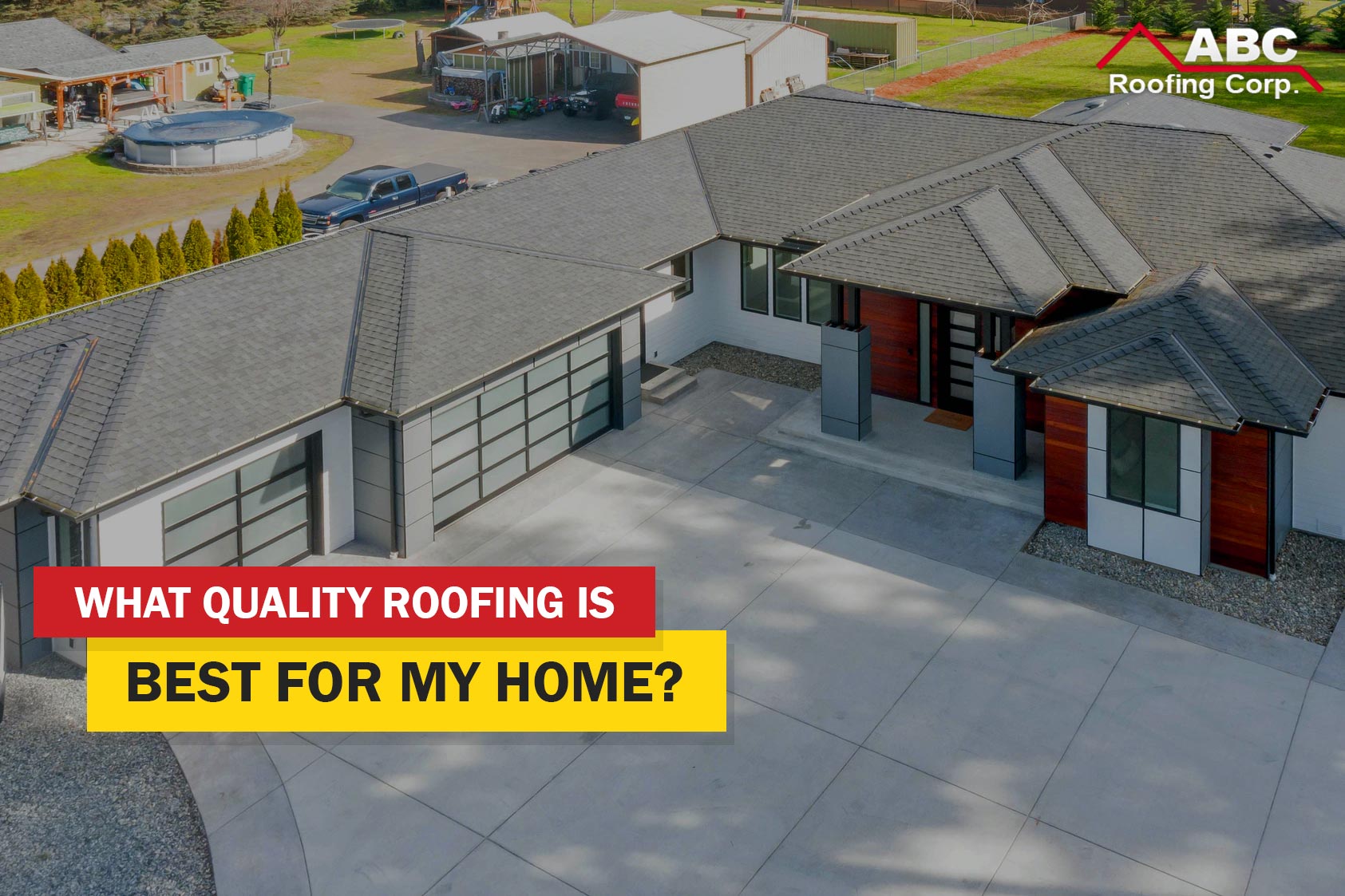
Whether you’re looking for quality roofing for a new or existing home, it’s important to know which roofing materials are the best for your house. Read on to learn about the different types of roofing materials, however, this is not an extensive list.
Asphalt (Composition) Shingles
Shingles made of asphalt shingles have been a common type of roofing material, however, with the rise of more energy-efficient and strong materials, i.e., metal, it is slowly becoming less common. Asphalt (composition) shingles could be the quality roofing you’re looking for.
It outshines the market because of how inexpensive it is. Asphalt also comes in an array of appealing choices and does well in shielding homes from mother nature’s surprises. Professionals, like ABC Roofing Corp. may suggest asphalt roofing as a quality roofing option for you.
There are two common types of asphalt shingles: fiberglass shingles and organic shingles, however, organic shingles are near non-existent today. Fiberglass shingles begin with a fiberglass mesh that is blanketed in asphalt and sprinkled with granules that add color and reflect a portion of the sunlight.
Advantages Of Asphalt Shingles
- Looks good on most homes
- Provides fire protection
- Shingles tend to be the most affordable roofing material
Disadvantages Of Asphalt Shingles
- If living in a shady area, mold or algae can be a problem if not properly treated
- The lifetime expense of shingles tends to be higher than metal, tile, or slate because composition shingles requires frequent replacements
- Least eco-friendly roofing option
Wood Shingles and Shakes
Wood shakes and shingles are other kinds of quality roofing. Shingles are cut by a machine and have neat edges and a level surface to create a uniform look. Compared to wood shingles, wood shakes are cut by hand from a section of wood. Because of this, they have a rustic image and a greater thickness. This also makes wood shakes more costly than wood shingles.
Advantages Of Wood Shingles and Shakes
- Options of different types of wood shingles and shakes, specifically cedar and redwood, has a natural resistance to moisture and bugs due to the oil they have
- Wood shingles that are treated hold a Class A fire rating
- Cedar shingles and shakes can last about five to ten years longer compared to asphalt when it’s properly cared for
Disadvantages of Wood Shingles and Shakes
- Wood shakes and shingles that are left untreated are high maintenance
- Non-treated wood shingles and shakes have a Class C fire rating, however, cedar shingles and shakes are accessible as a more expensive treated choice
- Wood shingles and shakes may stain due to natural causes, like the release of tannins coming from the wood
Metal Roofing
Metal roofing has been around for quite some time and ABC Roofing Corp. stands behind its environmental benefits. There has been a recent revival of metal roofs guided by the want for durability, environmentally friendly roofing, and the debut of new styles. It is a sustainable type of quality roofing.
Due to the way metal roofs are manufactured, it offers a span of the different ways it can appear, like shakes and tiles. Overall, metal roofing offers many sustainability benefits.
Advantages Of Metal Roofing
- Metal is about a 50- to 100-year-old roofing material with warranties of 30-50 years to back it up
- Metal can reflect solar radiant heat, which can keep your home cooler, therefore, controlling energy costs during sweltering weather compared to asphalt
- A lot of metal roofs contains recycled materials and aged metal panels are entirely recyclable at the end of their lifespan
Disadvantages Of Metal Roofing
- Metal roofing tends to be more costly than asphalt shingles and wood roofing, but keep in mind its durability and long lifespan
- The roofing material can have indentations when bumped by a hefty object and having metal panels replaced is more expensive
Concrete And Clay Roof Tiles
There are three types of concrete and clay roof tiles: traditional clay tiles, concrete tiles, and fiber cement tiles. Traditional clay tiles are reinforced to give them strength and make them long-lasting.
Concrete tiles are developed with a buoyant mixture that makes them strong, but easy to work with. Fiber cement tiles are made of wood and clay mixed into concrete for buoyant sturdiness. The tiles are finished with a waterproof coating.
Advantages Of Concrete and Clay Roof Tiles
- The three types of concrete and clay roof tiles provide over 50 years of durability
- Tiles withstand fire and bugs
- Light-hued tiles reflects sunlight
Disadvantages Of Concrete and Clay Roof Tiles
- Tiles tends to be heavier than the majority of quality roofing material
- Tile is more expensive compared to asphalt, wood, and metal
- Tiles are delicate
Natural And Synthetic Composite Slate Tiles
Natural slate tiles are the sturdiest roof that can be built on a building. Synthetic composite slate and shake tiles usually are low-priced and have a light weight.
Advantages Of Natural and Synthetic Composite Slate Tiles
- Authentic slate lasts a lifetime
- Slate is low maintenance
- This is a type of green roofing material because it is durable, has low impact of manufacturing, and can be reused and recycled
Disadvantages Of Natural and Synthetic Composite Slate Tiles
- Authentic slate is very heavy quality roofing material
- Moisture problems can occur if slate is not correctly installed
Local Roofing Professionals in Coral Springs
Regardless of why you’re searching for quality roofing, becoming informed on the various types of roofing materials best for your home is important to meet your wants and needs.
Do you have more questions on roofing? Check out our roofing blog, follow ABC Roofing on Facebook, or call us at (954) 344-4622.
